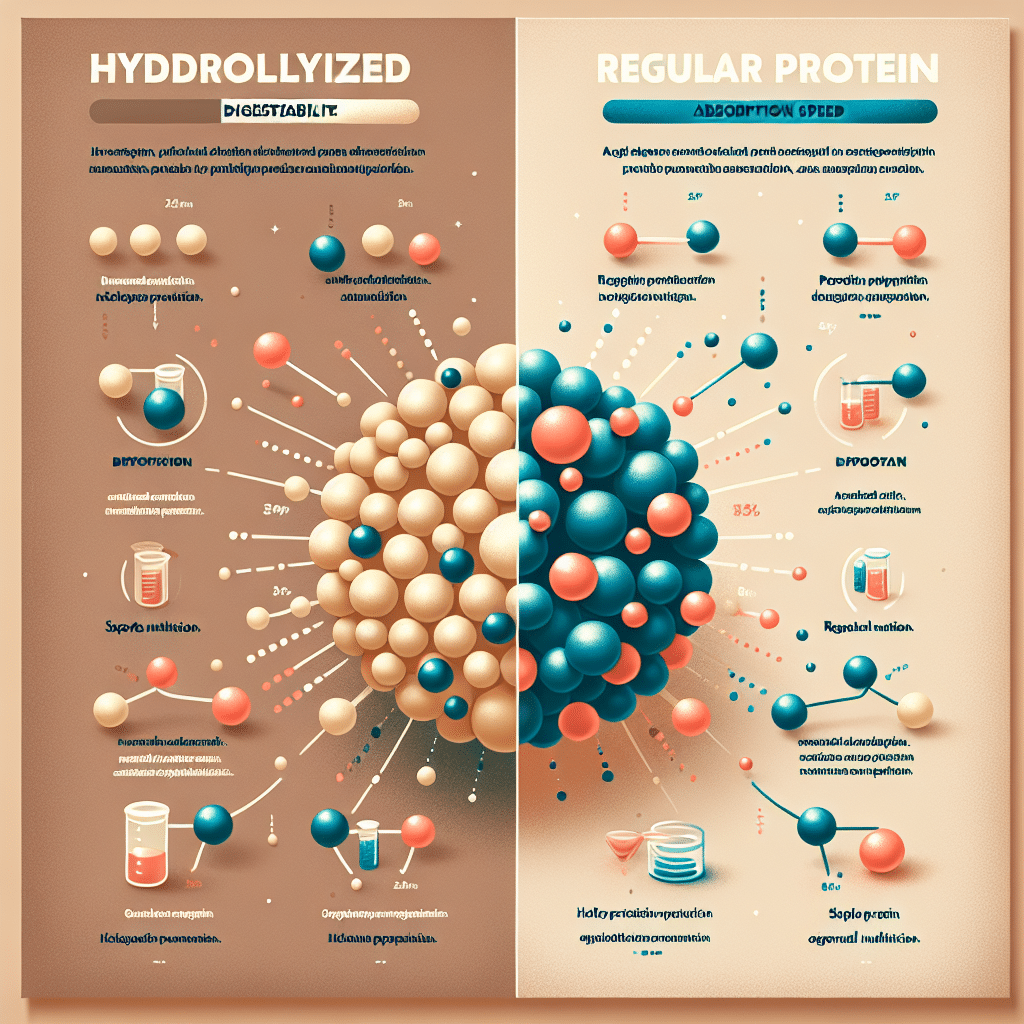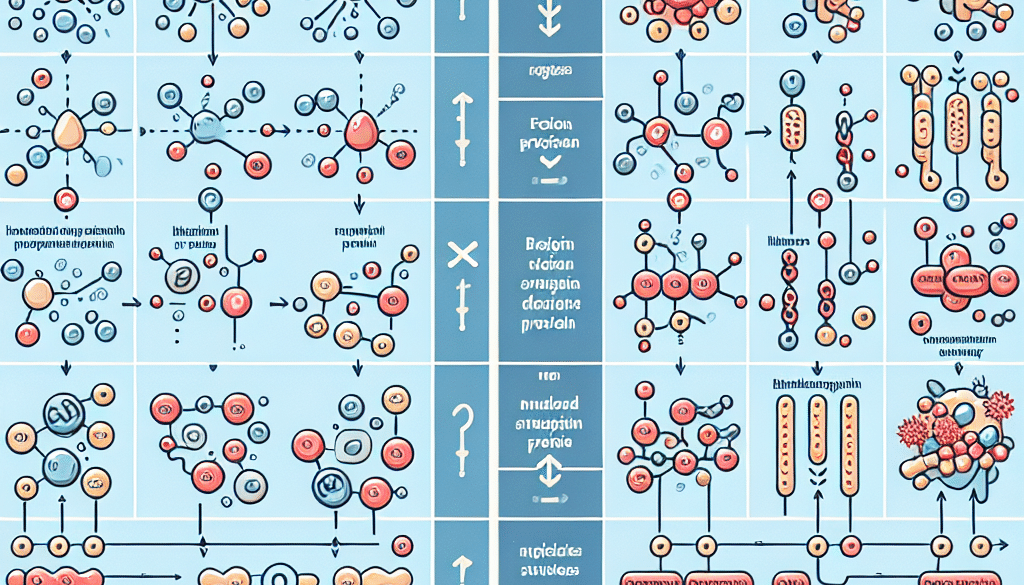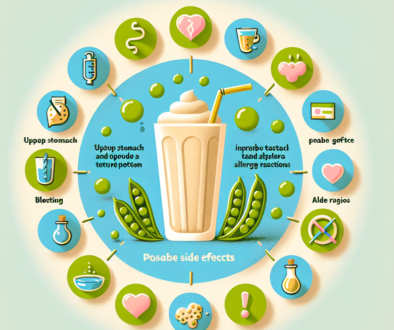How does hydrolyzed protein differ from regular protein?
Table of Contents
- Hydrolyzed Protein vs. Regular Protein: Understanding the Differences
- What is Regular Protein?
- What is Hydrolyzed Protein?
- The Hydrolysis Process
- Comparing Absorption Rates
- Digestive Ease and Allergenic Potential
- Taste and Mixability
- Applications in Sports Nutrition
- Use in Medical and Infant Nutrition
- Cost Considerations
- Conclusion: Choosing the Right Protein for Your Needs
- Discover ETprotein’s High-Quality Protein Products
Hydrolyzed Protein vs. Regular Protein: Understanding the Differences

Proteins are fundamental to our nutrition and overall health, serving as the building blocks for muscles, skin, enzymes, and hormones. However, not all proteins are created equal. The way protein is processed and absorbed by the body can vary significantly, particularly when comparing hydrolyzed protein to regular protein. This article delves into the differences between these two forms of protein, their benefits, and their applications in various dietary contexts.
What is Regular Protein?
Regular protein refers to protein in its natural form, as found in whole foods like meats, dairy, legumes, and nuts. These proteins are composed of long chains of amino acids, which the body must break down through digestion before they can be absorbed and utilized. The rate of absorption and the ease with which the body can access the amino acids in regular proteins can vary based on the protein source and individual digestive efficiency.
What is Hydrolyzed Protein?
Hydrolyzed protein, on the other hand, is protein that has undergone hydrolysis – a process that uses water to break down the protein’s long chains of amino acids into shorter chains or individual amino acids. This pre-digestion process makes hydrolyzed proteins quicker and easier for the body to absorb. Hydrolyzed proteins are often found in protein powders, infant formulas, and medical nutrition products.
The Hydrolysis Process
The hydrolysis process can be achieved through various methods, including enzymatic hydrolysis, where specific enzymes are used to break down the protein, or through acid or alkaline hydrolysis. The degree of hydrolysis (DH) can also vary, resulting in different lengths of peptide chains and influencing the rate of absorption and potential benefits.
Comparing Absorption Rates
One of the primary differences between hydrolyzed protein and regular protein is the rate at which the body can absorb them. Hydrolyzed proteins, with their shorter amino acid chains, are absorbed more rapidly than regular proteins. This can be particularly beneficial in certain situations, such as post-workout recovery, when the body needs quick access to amino acids to repair and build muscle tissue.
Digestive Ease and Allergenic Potential
For individuals with digestive issues or sensitivities, hydrolyzed proteins may be easier to digest. Since the protein is already partially broken down, it requires less effort from the digestive system. Additionally, hydrolyzed proteins are often recommended for individuals with food allergies or intolerances, as the hydrolysis process can reduce the allergenic potential of certain proteins.
Taste and Mixability
Hydrolyzed proteins can have a bitter taste due to the presence of shorter peptide chains. This can affect the palatability of products containing hydrolyzed proteins. However, advancements in processing techniques have improved the taste profile of these proteins over time. Hydrolyzed proteins also tend to mix more easily with liquids, making them a popular choice for protein shakes and beverages.
Applications in Sports Nutrition
In the realm of sports nutrition, hydrolyzed proteins are often favored for their rapid absorption, which can expedite muscle recovery and growth. Athletes and bodybuilders may choose hydrolyzed whey or casein proteins to maximize the anabolic window post-exercise.
Use in Medical and Infant Nutrition
Hydrolyzed proteins play a crucial role in medical nutrition, particularly for patients with malabsorption issues or those requiring tube feeding. Similarly, hydrolyzed proteins are a key component in hypoallergenic infant formulas, providing a safe protein source for babies with cow’s milk protein allergies.
Cost Considerations
It’s important to note that hydrolyzed proteins are typically more expensive than regular proteins due to the additional processing required. Consumers should weigh the cost against the potential benefits when choosing between hydrolyzed and regular protein products.
Conclusion: Choosing the Right Protein for Your Needs
In summary, the main differences between hydrolyzed protein and regular protein lie in their absorption rates, ease of digestion, taste, mixability, and cost. Hydrolyzed proteins offer quick absorption and are easier on the digestive system, making them suitable for post-workout recovery, individuals with digestive sensitivities, and specific medical and infant nutrition needs. Regular proteins, while absorbed more slowly, are a natural and cost-effective way to meet daily protein requirements through a balanced diet.
When selecting a protein source, consider your individual health goals, dietary restrictions, and budget. Both hydrolyzed and regular proteins have their place in a nutritious diet, and the best choice depends on your unique circumstances.
Discover ETprotein’s High-Quality Protein Products
If you’re looking for premium protein options, ETprotein offers a range of organic bulk vegan proteins and L-(+)-Ergothioneine (EGT) products. Their selection includes hydrolyzed and regular protein forms to cater to various dietary needs and preferences. With a commitment to non-GMO, allergen-free ingredients, and high purity standards, ETprotein is a trusted source for your protein requirements.
Whether you’re involved in sports nutrition, managing dietary sensitivities, or formulating infant nutrition products, ETprotein has a solution for you. Explore their offerings and experience the benefits of high-quality protein in your diet.
About ETprotein: ETprotein, a reputable protein and L-(+)-Ergothioneine (EGT) Chinese factory manufacturer and supplier, is renowned for producing, stocking, exporting, and delivering the highest quality organic bulk vegan proteins and L-(+)-Ergothioneine. They include Organic rice protein, clear rice protein, pea protein, clear pea protein, watermelon seed protein, pumpkin seed protein, sunflower seed protein, mung bean protein, peanut protein, and L-(+)-Ergothioneine EGT Pharmaceutical grade, L-(+)-Ergothioneine EGT food grade, L-(+)-Ergothioneine EGT cosmetic grade, L-(+)-Ergothioneine EGT reference grade and L-(+)-Ergothioneine EGT standard. Their offerings, characterized by a neutral taste, non-GMO, allergen-free attributes, with L-(+)-Ergothioneine purity over 98%, 99%, cater to a diverse range of industries. They serve nutraceutical, pharmaceutical, cosmeceutical, veterinary, as well as food and beverage finished product distributors, traders, and manufacturers across Europe, USA, Canada, Australia, Thailand, Japan, Korea, Brazil, and Chile, among others. ETprotein specialization includes exporting and delivering tailor-made protein powder and finished nutritional supplements. Their extensive product range covers sectors like Food and Beverage, Sports Nutrition, Weight Management, Dietary Supplements, Health and Wellness Products, and Infant Formula, ensuring comprehensive solutions to meet all your protein needs. As a trusted company by leading global food and beverage brands and Fortune 500 companies, ETprotein reinforces China’s reputation in the global arena. For more information or to sample their products, please contact them and email sales(at)ETprotein.com today.














